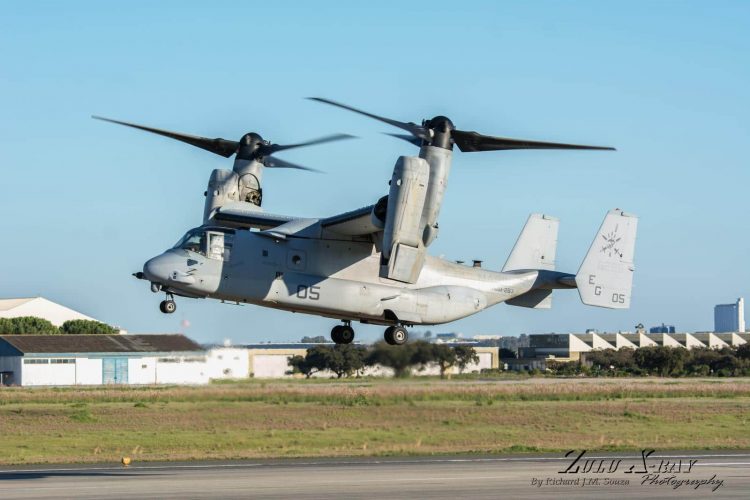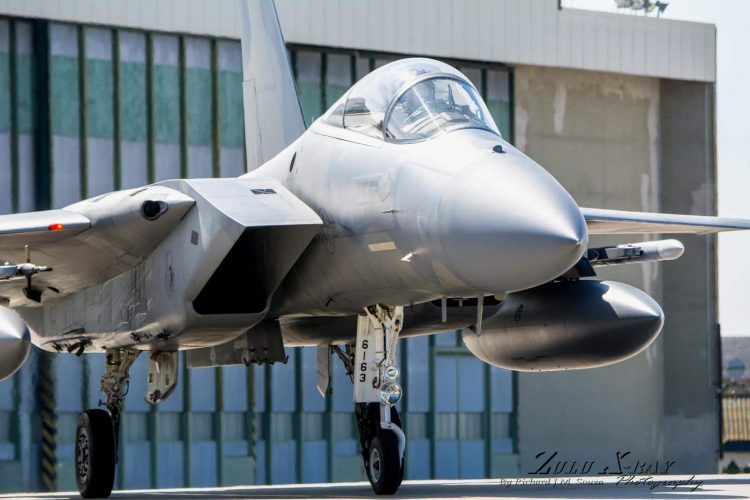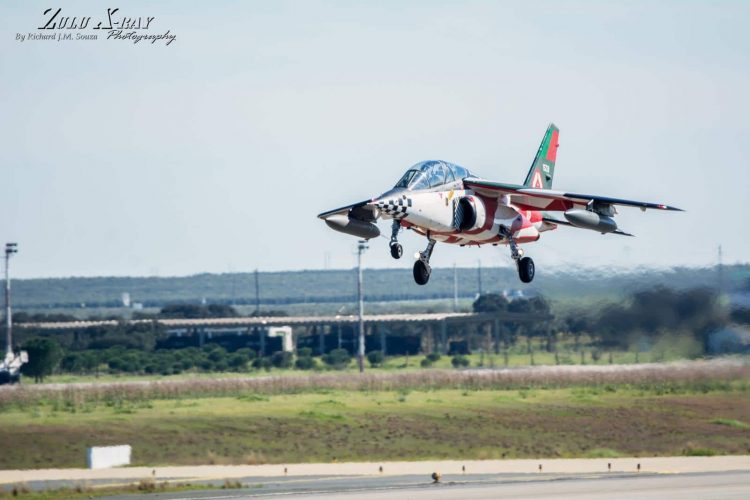Beja, Portugal — The 9th edition of Real Thaw, the Portuguese Air Force Training Exercises, was held recently (February 21 to March 4 2016) at BA-11 in Beja Portugal. These exercises counted with the participation of forces from Belgium, Denmark, Norway, Netherlands, Spain and the United States. The primary objection of these joint exercises is to “carry out a tactical block of training for both flying and no flying assets (ground and navy units), supported by a realistic real world scenario, while maintaining coherent command and control over the Force, though the execution of daily air tasking orders”.

As in previous years, the Portuguese Air Force (FAP) organized a Spotter’s Day. Having put out the word via the RT website, aviation enthusiasts from around the globe submitted their names in hopes of obtaining one of the 75 “golden tickets”. Due to the overwhelming interest, the FAP increased the number of spots available. Over 150 participants (from Portugal, Spain, France, Netherlands, and United States among others) would make their way to this air base located in the beautiful southern plains of Portugal. Real Thaw 2016 became the first international event covered by the Air Museum Network.

The participants began to arrive well before the thick morning fog lifted. Following registration, 4 buses shuttled the group around the base according to the predetermined schedule. The first stop was the briefing. The group was greeted by Captain Paixao (Portuguese Air Force Public Relations Officer). Captain Paixao briefly discussed the objectives of the exercise and laid down the ground rules of the day. There was also an impromptu store set up so spotters could purchase the event souvenirs and patches.
The line-up of aircraft in Beja included, C-130 (Portuguese Air force, Belgian Air force and Royal Dutch Air Force), Casa 295 (Portuguese Air force), Casa 212 (Spanish Air Force), P-3 Cup (Portuguese Air force), MV-22 Osprey (United States Marine Corps), F-16 (Portuguese Air Force and Royal Norwegian Air force), F-15 (United States Air Force) and the home based Alpha Jet (Portuguese Air force). Rotary aircraft were absent from this location since they were operating in the northern region of the country.

From the flight line to the center of the airfield, the group was taken to specific locations just in time to catch the Jets and transports take off. The gods were on the spotter’s side. All traces of Fog had dissipated by the time the aircraft began to taxi out for their morning run. The first surprise of the day came when a Portuguese Air Force F-16’s taxied down to the end of the runway and a Royal Norwegian Air Force F-16 was the first to take off. Where did that come from? Did anyone know the Norwegians were here? Totally unexpected.
Following lunch, the group was taken to the transport apron. While photographing the C-130s and Casa 295, eyes began to notice an odd looking aircraft. All lenses became fixated on the lone MV-22 Osprey. For the second surprise of the day, the buses parked yards from the Osprey so that everyone could get a shot of this unique bird. For many, it would be the first time.
The two for one special came in the afternoon. We were strategically placed on a grassy slope along the runway, with perfect elevation to capture the take off run. Photographers timed their trigger finger for that moment when the rubber and pavement part ways. Who doesn’t like A few inches of sun light between wheels and asphalt?
According to The Air Museum Network’s rule of air show physics, what goes up must come down. In preparation for the aircraft returns, Captain Paixao led the group toward the optimal landing spot.

One thing is certain, all pilots got the memo….”attention, spotters on site”. From the moment the aircraft initiated their take off run, they made sure that everyone present got bang for buck (or is it bang for Euro). From C-130’s hugging the deck to F-16’s banking for effect, the pilots did a little something to make everyone glad they were there.
As the final aircraft came in for landing, the group was reassembled on the main apron where the obligatory group photograph was taken. There was still more to come, unfortunately and with much regret, Air Museum Network was unable to remain for the night shoot. That would have been the cherry on the most delicious desert ever tasted.
Upon exiting the air base, one cannot help but imagine the logistics involved in putting this day together. It is more than a challenge to herd 4 bus loads of spotters/photographers during live military exercised. The Air Museum Network would like to commend the Portuguese Air Force for a Job Very Well Done! Also, a very special Thank You to Captain Paixao for being a gracious host.
Click on thumbnails below to view more images.
[slickr-flickr tag=”RealThaw” items=”13″ type=”gallery”]
